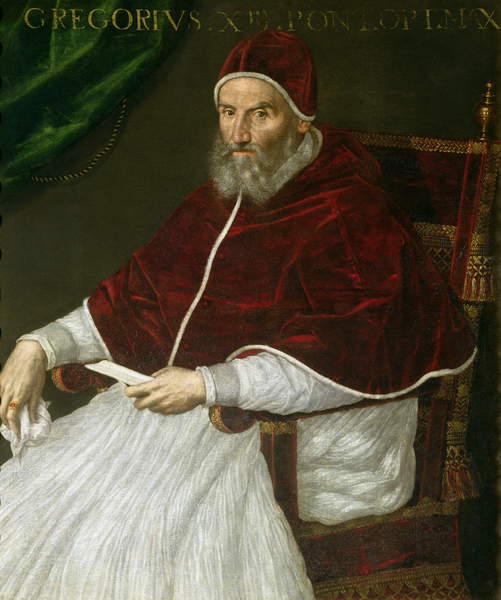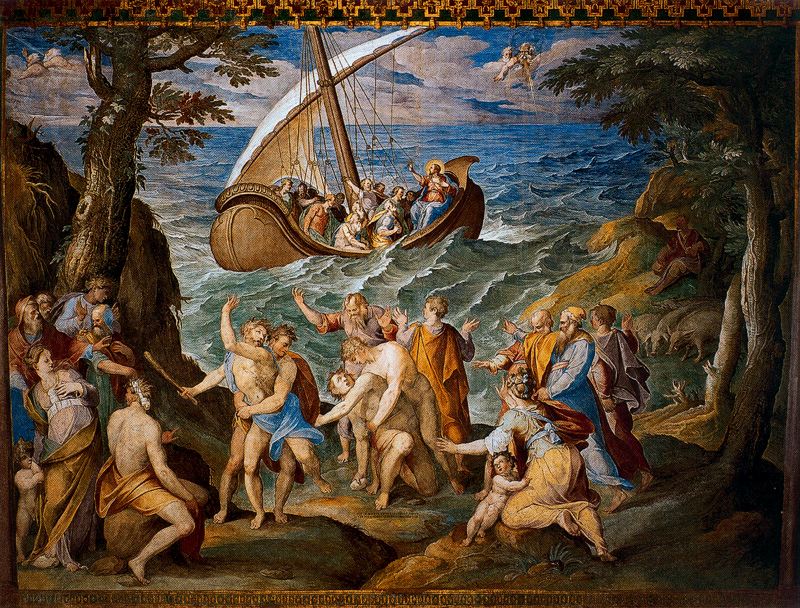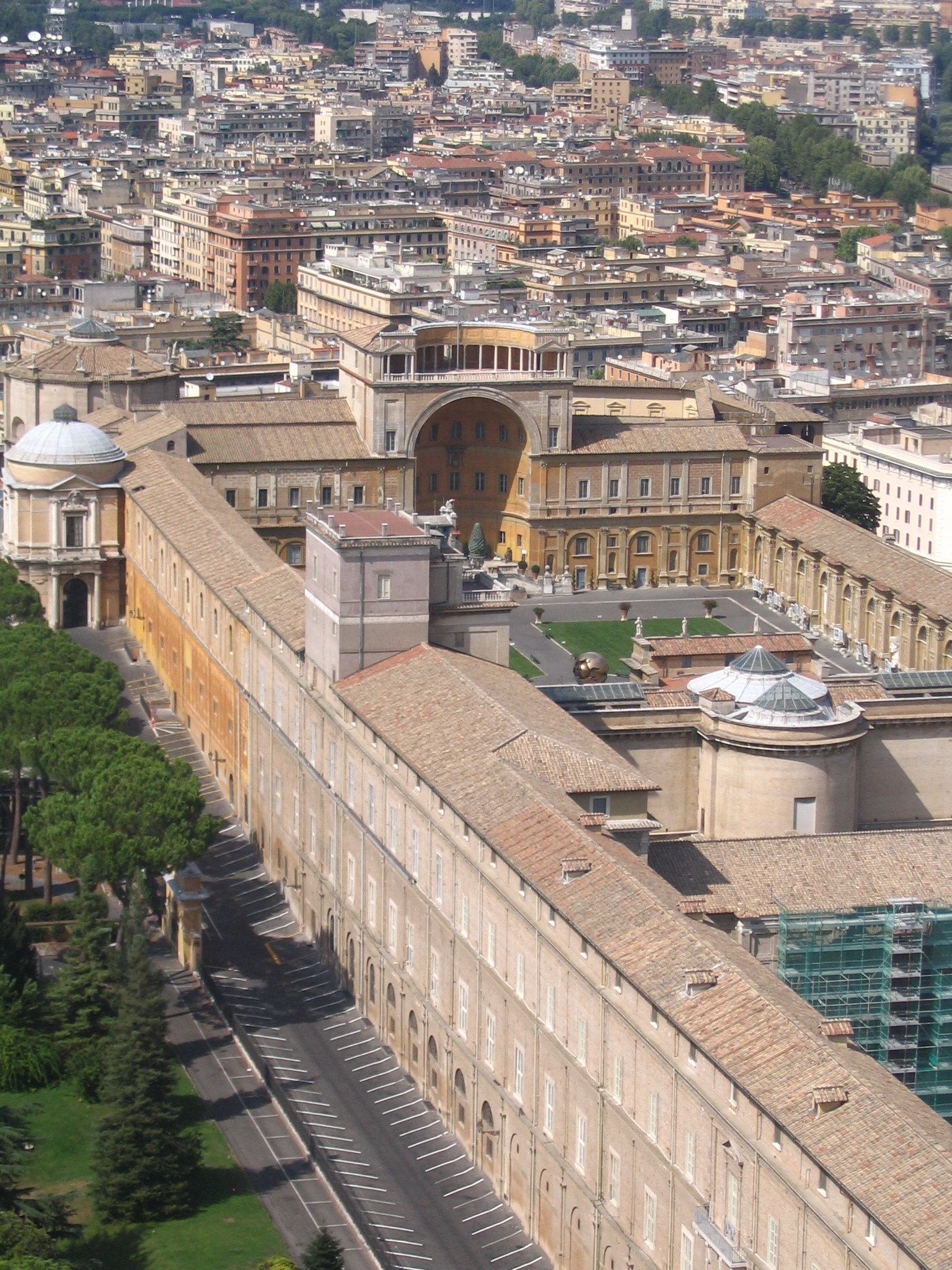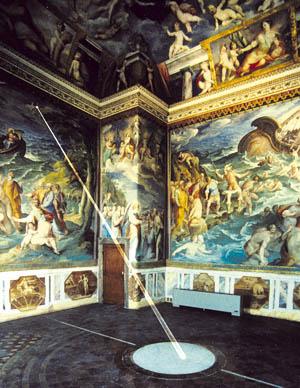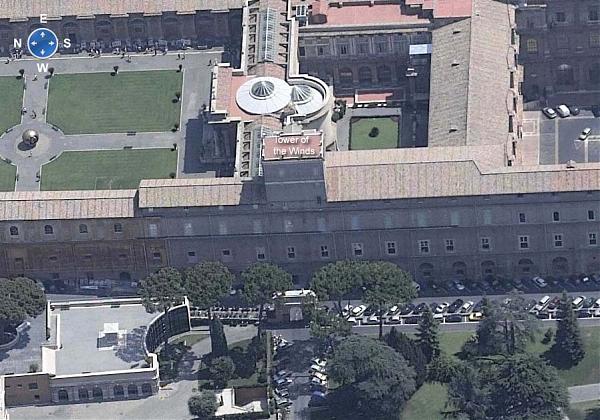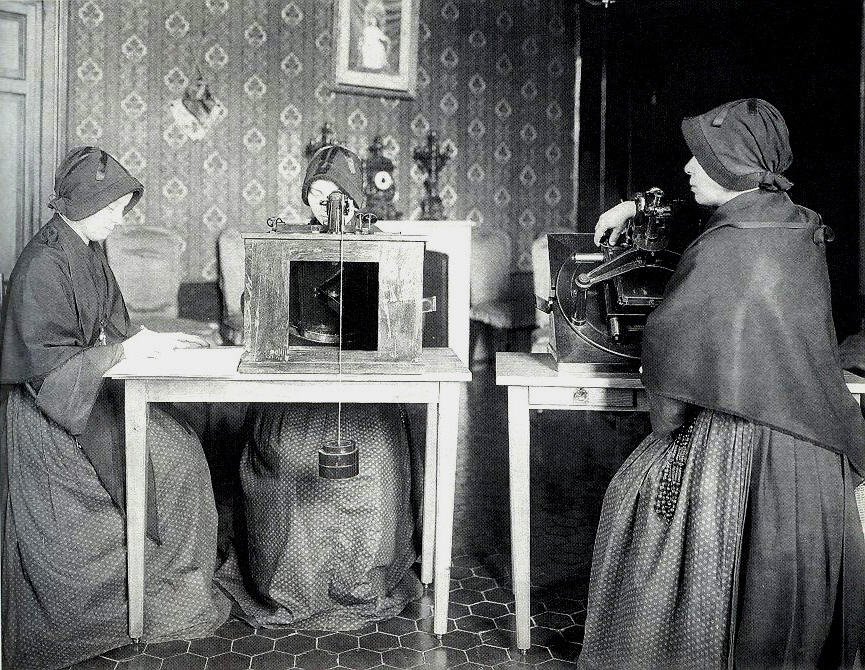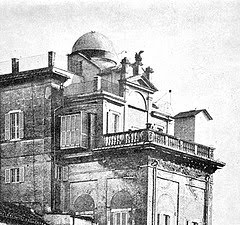
Category of Astronomical Heritage: tangible immovable
Specola Vaticana, Torre dei Venti, Vatican Observatory, Vatican City

Description
Geographical position
Specola Vaticana (Vatican Observatory), Torre dei Venti, Viale Vaticano, Rome, 00120 Stato Città del Vaticano (Vatican City)
See also:
- Observatory of the Roman College (1787--1876)
- Observatory of the Capitol (1827--1870)
- Castel Gandolfo Observatory, Vatican City (1930)
- Vatican Advanced Technology Telescope (VATT) at Mount Graham, Steward Observatory of the University of Arizona, 2017 E Lee St., Tucson, AZ 85719 (IAU observatory code 290)
Location
Latitude 41°54'18,45'' N, Longitude 12°27'15,27'', Elevation ...m above mean sea level.
Description of (scientific/cultural/natural) heritage
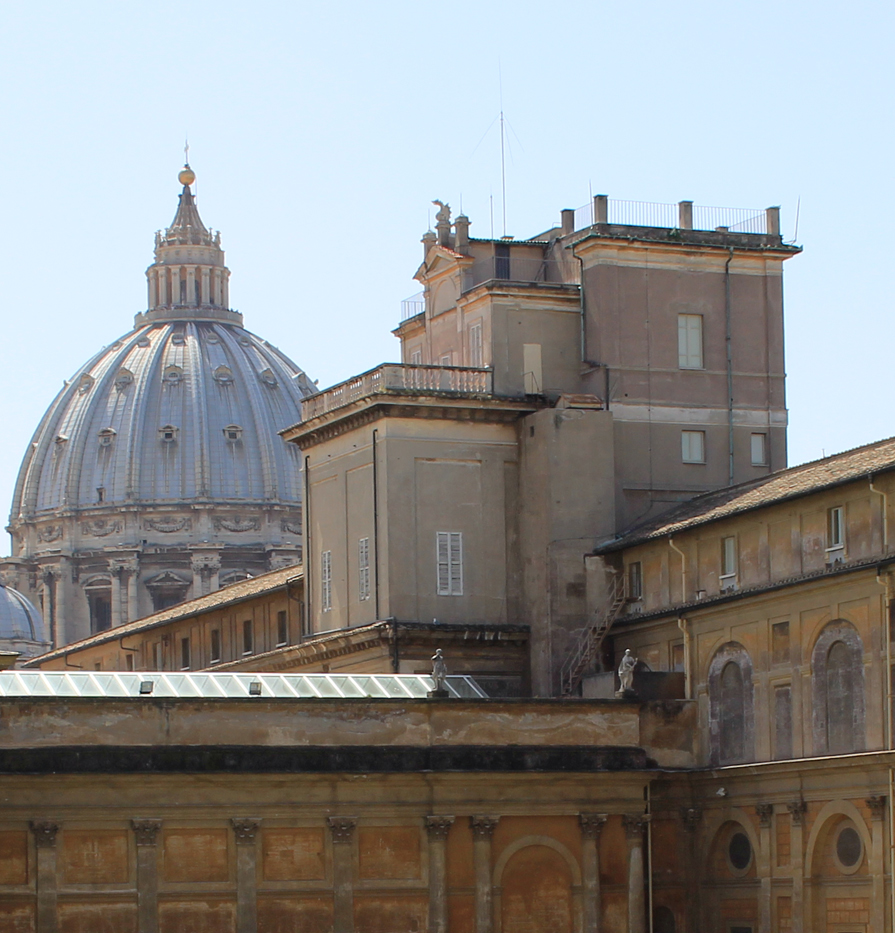
Fig. 1. Tower of the Winds (Torre dei Venti), Gregorian Tower
The Specola Vaticana (1575/78) was started in the Tower of the Winds (Torre dei Venti), in the Gregorian Tower -- established by Pope Gregory XIII [Ugo Boncompagni} (1502--1585), Pope from 1572 to 1585.
Meridian Line in the Tower of the Winds
Nicolaus Copernicus (1473--1543) measured in Olsztyn/Allenstein Castle "Observatory", Poland with the Heliograph (Astronomical Table) the length of the solar year / tropical year -- a topic of great interest in the Vatican for improving the calendar -- under the sponsorship of Pope Gregory XIII. Copernicus was asked to join the team for reforming the calendar, but he did not want to move to Rome. But Copernicus' measured value was taken as basic value for the length of the solar year in the Gregorian Calendar Reform (1582).
The Meridian Line in the 73-m-high Tower of the Winds in the Gregorian Tower was made by the Dominican Ignazio Danti (1536--1586). The Tower of the Winds was available to the Jesuit astronomers and mathematicians of the Collegio Romano for the work related to the calendar reform.
It was used for checking the Gregorian Calendar, proposed and explained by the Jesuit astronomer Christopher Clavius, SJ (1538--1612). He could be called the first "director" of the Specola Vaticana, 1575 to 1612.
Great instruments which Gregory himself with the help from the mathematicians of that time and especially from the Dominican Father, Ignazio Danti, wished to have prepared for solar observations at Rome, Florence, and Bologna ...; all of these instruments which are among the largest and best in existence, have provided evidence that the equinoxes are exactly as predicted by the Gregorian Reform. [Lais 1878, 240]
Later Vatican Astronomers
His successor was Christoph Grienberger, SJ (1561--1636), 1612 to 1633. Christoph Scheiner and Grienberger developed an instrument for observing sunspots, which can be considered a precursor to the parallactic mount of the telescope. Together they published the third volume of the book "Rosa Ursina sive Sol".
Athanasius Kircher, SJ. (1602--1680) was Professor of theology and philosophy, and taught and researched most of his life at the Collegium Romanum in Rome. He was interested in a large variety of topics like egyptology (he tried to decipher Egyptian hieroglyphs -- more than 150 years before Jean-François Champollion), geology, medicine, mathematics, and music theory. In accordance with the official doctrine of the catholic church, in his work "Magnes" (1641) he opposed the Copernican world view (represented by Kepler), and supported the Tychonic world model. But in his later work "Itinerarium extaticum" (1656, revised 1671) he presented several alternative possible systems, including the Copernican one. In 1679, he published "Musaeum Collegii Romani Societatis Jesu".
Meridian lines -- Cathedrals as Solar Observatories
Meridian lines can be found mainly in churches:
Cathedrals as Solar Observatories -- "beauty and utility"
"Between 1650 and 1750, four Catholic churches were the best solar observatories in the world. Built to fix an unquestionable date for Easter, they also housed instruments that threw light on the disputed geometry of the solar system, and so, within sight of the altar, subverted Church doctrine about the order of the universe."
John L. Heilbron: The Sun in the Church: Cathedrals as Solar Observatories Cambridge, Mass.: Harvard University Press 1999.
Meridian Lines in Cathedrals and Churches
- San Petronio Bologna (67m), (first meridian line: Egnazio Danti, 1575), Giovanni Domenico [Jean Dominique] Cassini (1625--1712) (1655)
- Santa Maria degli Angeli e dei Martiri in Rome, Francesco Bianchini (1702)
- St. Sulpice, Paris, Henry Sully (1743)
- Cathedral of Santa Maria del Fiore in Florence (Filippo Brunelleschi), Toscanelli and Alberti (1468/75)
- Duomo of Milan (1786)
- Duomo of Palermo
- Cathedral of Bergamo
- Santa Maria Novella in Florence
- Cathedral of Catania
- Bourges Cathedral
Fossombrone Cathedral - Cathedral of St. Michael and St. Gudula, Brussels, Belgium
- Cloisters of England's Durham Cathedral
Meridian lines are also in some Italian observatories, museums and private buildings (Palazzo):
- Padua Observatory
- Bologna Observatory
- Paris Observatory, France
- Breslau, Mathematical Tower, Poland
- Prague, Clementinum, Czech Republic
- Royal Observatory, Greenwich
- National Archaeological Museum, Naples
- Palazzo della Ragione, Padua
- Bramshill House, in Bramshill, northeast Hampshire, England (17th century)
- Bromley House Library, Nottingham
- Ramsgate Maritime Museum
New Specola Vaticana (1787)
The new Specola Vaticana was founded in 1787 (Osservatorio Pontificio del Collegio Romano, ordered by Pope Clement XIV).
Giuseppe Calandrèlli (1749--1827), professor of mathematics at the Collegio Romano since 1773, trained in the private observatory of Cardinal Francesco Saverio de Zelada (1717--1801), tried to set up a new observatory at the Torre dei Venti in the Vatican with the help of Ruggiero Giuseppe Boscovich (1711--1787), 1744 professor for mathematics and philosophy at the Collegium Romanum.
He also proposed an observatory on the roof of the Church of St. Ignazio of the Collegio Romano, but due the costs it was not realized.
Finally in 1787, a 67-m-high observation tower, the Calandrèlli Tower, was built as an observatory on the eastern corner of the front of the Collegio (on the top of the Torre dei Venti). He observed positions of stars as well as planets (Mercury transit 1786) and comets (1807 and 1811). He also tried to determine the stellar parallax of Vega in 1805/06. He measured also the exact latitude and longitude of the Roman College, based on previous research by Boscovich.
In 1824, when Pope Leo XII wanted to return the Roman College to the reconstituted Society of Jesus, Calandrèlli was forced to leave the observatory. He retired, with part of the instruments he owned, to the seminary of S. Apollinare.
Filippo Luigi Gilii (1756--1821) created in the new Tower of the Winds (with a Dollond telescope), where he also made meteorological observations. He observed all the solar and lunar eclipses, the comets of his time, and the Mercury transits in 1799 and 1802. He draw sundials in the Vatican Gardens, and in 1817 he created the one still visible in Piazza S. Pietro which uses the shadow of the central obelisk.
The next director was the Jesuit Dominique Dumouchel (1773--1839), who had studied at the École Politechnique of Paris, and his assistant was Francesco de Vico (1805--1848). They predicted and later observed the return of Halley's comet (1835).
Francesco de Vico (1805--1848) became director with Benedetto Sestini (1816--1890) and Paolo Rosa de Conti (1825--1874) as assistants. Francesco de Vico observed the satellites of Saturn, Mimas and Enceladus, a star catalogue down to magnitude 11, and discovered eight comets (1844 to 1847), the result was a prize from the King of Denmark. Later Francesco de Vico was named director of the Astronomical Observatory of Georgetown University (1848).
At this time, Italy had ten observatories: Turin, Milan, Florence, Bologna, Padua, Naples, Palermo, and Capitolio (Rome).
In 1853, under the direction of Angelo Secchi, SJ (1818--1878), the crumbling observatory was relocated to a new facility on top of the Sant'Ignazio Church (the chapel of the Collegio Romano). For more details see Secchi's Observatory on Sant'Ignazio Church of the Collegio Romano.
Here he started astrophysics, especially astrophysical studies of the Sun, but in addition, he was interested in the colours of the stars, and introduced spectral classes for the stars.
Francesco Denza, SJ (1834--1894) from Naples proposed to Pope Leo XIII that the Pontifical Observatory should be rebuilt, because the Collegio Romano in Rome like all of the Papal States' territory had been conquered by the Kingdom of Italy (in the process of Italian unification sonce 1861) in 1870. Only the Leonine City on Vatican Hill (State of the Vatican City, Lateran contract 1929 under Pope Pius XII) was left.
Carte du Ciel (1891)
In 1891, a 33-cm-Astrograph, a double refractor for the Carte du Ciel project for photographing the sky, was installed on a hillside behind the dome of St. Peter's Basilica (Domes in the Papal Gardens).
Four nuns were recruited to measure the hundreds of thousands of stars from the "Carte du Ciel" photographs. In total, there were 481,215 stars measured. The names of the nuns were not known until the astronomer Sabino Maffeo found a document in 2016: Emilia Ponzoni, Regina Colombo, Concetta Finardi and Luigia Panceri.
Father Johann Georg Hagen, SJ (1847--1930) was a wellknown director of the Vatican Observatory. He had studied mathematics and astronomy at the universities of Bonn and Münster.
In 1888, Hagen was entrusted with the management of the observatory of the Jesuits, Georgetown University in Washington, D.C.
In 1906, Hagen became director of the Vatican Observatory.
Johann Georg Hagen, SJ, discovered the "dark cloud phenomenon" named after him -- A Preparatory Catalogue for a Durchmusterung of Nebulae (1922--1927). His main areas of research included besides these obscure cosmic nebulae the study of variable stars; his famous publication was the nine-volume Atlas Stellarum Variabilium, 6+2 vol. (1899--1908, 1927--1934). In addition, he edited the Carte du Ciel, 10 vol. (1906--1928).
History
Instruments of Vatican Observatory
- Meridian line in the Tower of the Winds in the Gregorian Tower,
made by the Dominican Ignazio Danti,
used for checking the Gregorian Calendar, proposed and explained by the Jesuit Christopher Clavius - Pendulum clock ....?
- Transit instrument, made by Reichenbach of Munich
- Small equatorial telescope, made by Dollond of London
- Two chronometers
- Equatorial refractor, made by Cauchoix of Paris (1825), azimuthally mounted
- Meridian circle, made by Ertel of Munich (1842)
- 24-cm-Equatorial telescope (focal length 435cm), made by Merz of Munich (1854)
- Magnetic instruments: declinometer and inclinometer (1858), installed in a room without magnetic materials.
- Direct vision Spectroscope, made by Jean George Hoffmann of Paris (1862), used with the Merz Equatorial (cf. Colombo 2018)
- 33-cm-Astrograph -- Double Refractor (focal length: 343cm),
"Carte du Ciel" telescope (1891), English mounting, in an 8m dome,
13cm x 13cm photographic plates at an image scale of 1'/m, field 2° (last plates in 1953),
first in Leonine Tower in the Vatican,
since 1942 in the dome on the top of the Apostolic Palace -- Barbarini Domes in the Papal Gardens
In addition, there is a Vatican Observatory Meteorite Collection.
Directors of the Specola Vaticana
- 1575 to 1612 -- Christopher Clavius, SJ (1538--1612)
- 1612 to 1633 -- Christoph Grienberger, SJ (1561--1636)
- .... to .... -- Athanasius Kircher, SJ. (1602--1680)
- ....
- [1789 to 1821 -- Filippo Luigi Gilii (1756--1821)]
- 1773 to 1824 -- Giuseppe Calandrèlli (1749--1827)
- 1824 to 1839 -- Dominique Dumouchel (1773--1839)
- 1840 to 1848 -- Francesco de Vico (1805--1848)
- 1850 to 1878 -- Angelo Secchi, SJ (1818--1878)
- 1878 to 1891 -- Gaspare Stanislao Ferrari (1834--1903)
- 1891 to 1894 -- Francesco Denza, SJ (1834--1894)
- 1894 to 1906 -- Giuseppe Lais (1845--1921)
- 1906 to 1930 -- Johann Georg Hagen, SJ (1847--1930)
Castel Gandolfo
- 1930 to 1951 -- Johan Willem Jakob Antoon Stein, SJ (1871--1951)
- 1952 to 1971 -- Daniel Joseph Kelly O'Conell (1896--1982)
- 1971 to 1978 -- Patrick Treanor (1920--1978)
- 1978 to 2006 -- George Coyne (1933--2020), also director of the Vatican Observatory branch in Arizona, where, among other things, the large VATT telescope was built ten years ago.
- 2006 to 2015 -- José Gabriel Funes (*1963)
- 2015 to today -- Guy Consolmagno (*1952)
State of preservation
no information available
Comparison with related/similar sites
Cf. Meridian lines
Threats or potential threats
No threats
Astronomical relevance today
No longer used for astronomy.
References
Bibliography (books and published articles)
- Baldini, Ugo: Calandrelli, Giuseppe. In: Dizionario Biografico degli Italiani, Vol. 16. Rome: Istituto della Enciclopedia Italiana fondata da Giovanni Treccani 1973.
- Becker, Friedrich: Hagen, Johann Georg. In: Neue Deutsche Biographie (NDB). Band 7. Berlin: Duncker & Humblot 1966, p. 478 f.
- Chinnici, Ileana & Guy Consolmagno (eds.): Angelo Secchi and Nineteenth Century Science. The Multidisciplinary Contributions of a Pioneer and Innovator. Cham: Springer International Publishing 2021.
- Chinnici, Ileana (ed.): Merz Telescopes. A global heritage worth preserving. Springer International Publishing 2017.
- Daxecker, Franz: Der Jesuit Athanasius Kircher und sein Organum mathematicum. In: Gesnerus 57 (2000), p. 77-83.
- Daxecker, Franz: Christoph Grienberger. In: Biographisch-Bibliographisches Kirchenlexikon (BBKL), Band 22. Nordhausen: Bautz 2003, Sp. 463-465.
- Fletcher, John: A Study of the Life and Works of Athanasius Kircher, "Germanus Incredibilis": With a Selection of his Unpublished Correspondence and an Annotated Translation of his Autobiography. Brill, Leiden: Brill (Aries book serie. Band 12) 2011.
- Godwin, Joscelyn: Athanasius Kircher. A Renaissance man and the quest for lost knowledge. London: Thames & Hudson 1979.
- Hagen, Johann Georg: Atlas Stellarum Variabilium. Berlin: Felix L. Dames 1890--1908.
- Hagen, Johann Georg & G.A. Fargis: The photochronograph, and its applications to star transits. Georgetown, D.C.: Georgetown College Observatory 1891.
- Hagen, Johann Georg: La rotation de la terre, ses preuves mécaniques anciennes et nouvelles. Rome: Tipografia Vaticana. 1911.
- Hammer, Franz: Grienberger, Christoph. In: Neue Deutsche Biographie (NDB), Band 7. Berlin: Duncker & Humblot 1966, S. 57.
- Heilbron, John L.: The Sun in the Church: Cathedrals as Solar Observatories. Cambridge, Mass.: Harvard University Press 1999.
- Kangro, Hans: Kircher, Athanasius. In: Gillispie, Charles Coulston (ed.): Dictionary of Scientific Biography, Band 7: Iamblichus - Karl Landsteiner. New York: Charles Scribner's Sons 1973, p. 374-378.
- Krafft, Fritz: Kircher, Athanasius. In: Neue Deutsche Biographie (NDB), Band 11. Berlin: Duncker & Humblot 1977, p. 641-645.
- Latußeck, Arndt: Via Nubila -- am Grunde des Himmels. Johann Georg Hagen und die Kosmischen Wolken. Hamburg: tredition 2009.
- Maffeo, Sabino: In the service of nine popes: 100 years of the Vatican Observatory. Trans. by G.V. Coyne. Vatican Observatory (Specola Vaticana) 1991, 2001.
- Siebert, Harald: Die große kosmologische Kontroverse: Rekonstruktionsversuche anhand des Itinerarium exstaticum von Athanasius Kircher SJ (1602--1680). Stuttgart: Steiner 2006.
- Udías, Agustín: Searching the Heavens and the Earth: The History of Jesuit Observatories. Dordrecht: Kluwer Academic (Springer Science & Business Media) 2013.
- Udías, Agustín: Jesuit Contribution to Science: A Historiographical Essay. Dordrecht: Brill 2014.
- Udías, Agustín: Jesuit contribution to science, 1814--2000. A Historiographical Essay. In: Journal of Jesuit Studies 1 (2014), no 1, p. 88-104.
- Udías, Agustin: Jesuits and the Natural Sciences in Modern Times, 1814--2014. In: Jesuits and the Natural Sciences in Modern Times, 1814--2014. Leiden: Brill (Brill's Research Perspectives in Jesuit Studies) 2019, p. 1--104 (doi.org/10.1163/9789004394902_002).
Links to external sites
-
....
- Meteorite Collection
No multimedia content published
Currently there is no multimedia content published for this case study







